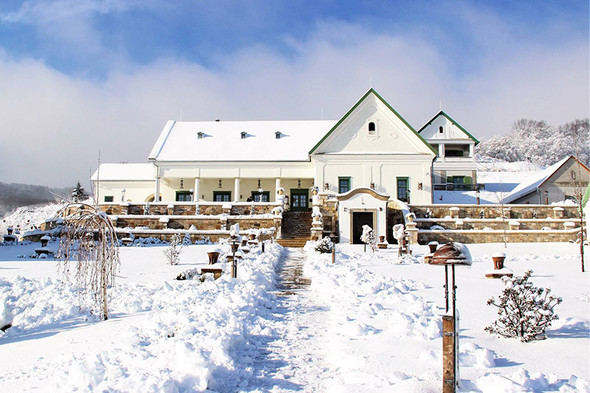Takler, one of Hungary’s best known wine brands, thanks to its big, rich wines such as Regnum and Primarius, celebrated its twentieth anniversary on 17 November with a tasting of museum wines and a gala dinner.
Beginning in 1996 with just one hectare of vines in the Decsi vineyard, where the centre of the greatly expanded estate can still be found today, the Takler family has come a long way since then. When they first bought the winery, there was just one small cellar branch, now there are several, not drilled, but built above the ground as part of the new estate buildings.
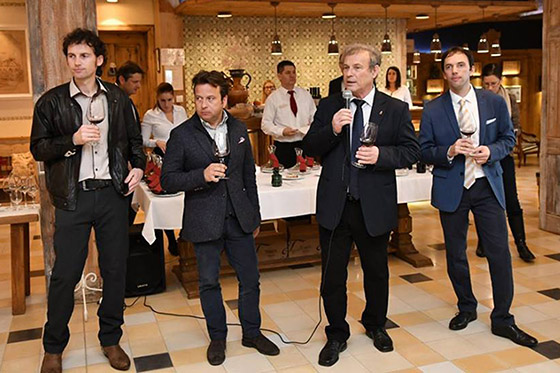
Two decades of hard work, underpinned of course by a love of wine, has made the Taklers one of Hungary’s wine success stories. Ferenc Takler, named Winemaker of the Year in 2004, was later joined by his sons András and Ferenc. András is now the face of the winery, in charge of marketing and communication activities, whereas Ferenc Jr takes of the viticulture and winemaking activities. Ferenc Sr quips that maybe he’ll now be able to take refuge in a monastery.
2000 saw expansion and the first plantings of Merlot in the Görögszó, Strázsa-hegy and Felső-Cinka vineyards, where much of the top Merlot still comes from today. Their emblematic top wines date from this period and are only made in outstanding vintages. 2003 was also a turning point in the winery’s history. Their Proprietor’s Cabernet Franc from that vintage was awarded 9.5 points out of 10 by legendary blogger Alder Yarrow and hence demand in the US soared as did prices, rising to $150-160 per bottle due to scarcity.
Ferenc admits that the road has not always been smooth and there have been times when they had to put on the brakes due to lack of money, but they kept on building and expanding and can now be proud of the estate. The imposing Takler ‘Mansion’, or Kúria in Hungarian, which was opened late last year, stands at its centre, now offering a hotel, restaurant, wellness and conference facilities. The family wish to ensure that guests have as complete an experience as possible, as they can’t drink wine all the time, can they? Although, admittedly they do drink a lot of it, remarks Ferenc Sr. Plans for a football field in grand cru vineyard areas, inevitably however, came in for a bit of flak. Next year they are planning a new processing area and cellar. A further two years of construction, says Ferenc and the dream estate should be complete.
Down in their Wine Sanctuary, we taste the base wines which will make their way into the Bikavér 2015, the fiery Szekszárd blend: Kékfrankos, Syrah, Merlot and Cabernet Sauvignon. You need to be careful not to add too much Syrah, though, as it takes away the authenticity, we’re told. Although Ferenc admits that 2015 was a difficult year with a lot of rain, they will be able to make the Kékfrankos Selection and Bikavér. They are happy to have managed this, as they had to select carefully to produce this blend. Thankfully there are now four of them involved in the winemaking, so they no longer need to work twenty hours a day. However, whether having more cooks involved in making the Bikavér broth is positive or not may be open to question at blending time; the samples are made, says Ferenc, and then the horror begins – nobody agrees, we have to stop, put them to one side and then begin again.
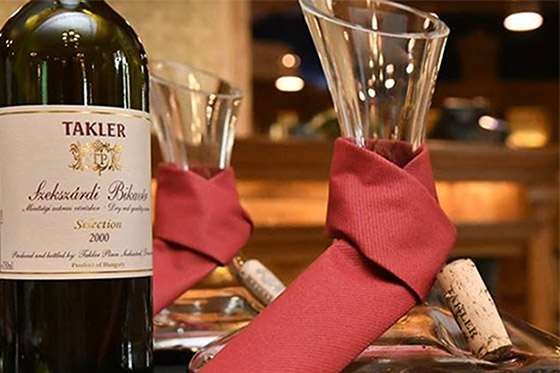
Although the wine world has been biased towards French varieties for many years, the focus has shifted to local varieties with consumers seeking out the new and unusual. In terms of red wine, that variety surely has to be Kékfrankos for Hungary, and certainly for Szekszárd, which is aiming to be representative of Kékfrankos. Its image has changed thankfully since the end of the nineties, when it was simply considered a cheap, basic wine, and nobody expected very much from it. Now plenty of premium wines are made from the variety and it stands a good chance next to the ubiquitous Cabernet Sauvignon if yields are kept to below 1kg per vine. Both Kékfrankos and Cabernet Franc do well in Szekszárd and are certainly capable of competing on the international stage. Unfortunately, Szekszárd suffered in 2016 and there will be no Kékfrankos this year for the Taklers – a disaster as this variety makes up about 60% of their produce. However, the Cabernet Franc looks good as does the Merlot, so this year there will be Primarius, their premium Merlot. The harvest was small, but what remained should give birth to some serious wines.
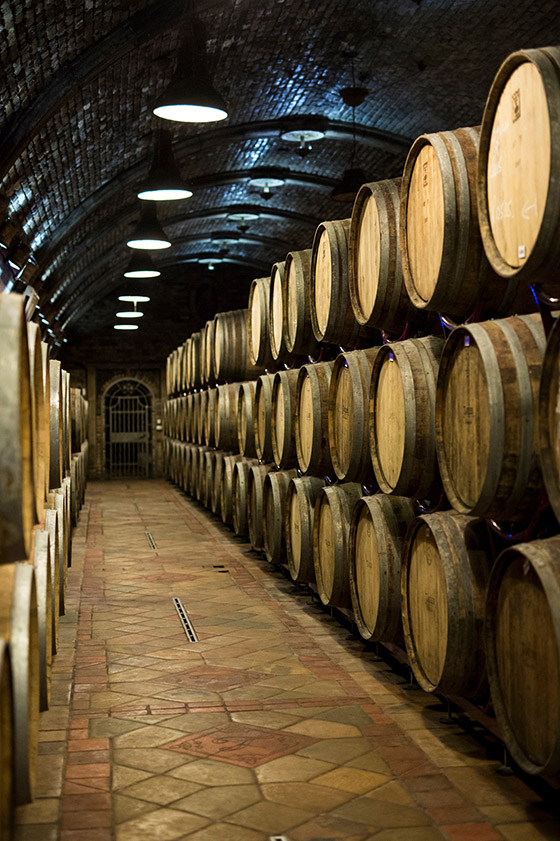
One of the main issues in Szekszárd, as well as their continued rivalry with their southerly neighbour, Villány, is keeping the alcohol levels under control, indeed some of the wines we tasted had alcohol levels in excess of 16%, which in some cases, unfortunately, stuck out like a sore thumb. András has travelled a lot and is trying to take the winery in a modern direction. He feels that there is no longer any need for high alcohol; the world has changed and it’s no longer appropriate to make wines in that style. Ferenc Sr still has the opposite attitude though, believing they know what they are doing with this. Why is it a problem for top wines to have high alcohol levels; it’s not possible to make top wine in Szekszárd without high alcohol, he believes, rightly or wrongly. Those who don’t like wines with high alcohol should drink beer, he points out. He doesn’t agree with Masters of Wine who take southern Hungary to task over high alcohol and overripe grapes; there are no overripe grapes in Hungary, where can you see overripe grapes here?
The main future challenge of the winery is to continue to work at this high level of quality, whilst also focusing on the minor details. András admits that the high alcohol is a problem when they are trying to return to elegance. Bikavér and Kékfrankos are tipped to be the future for Szekszárd, and Szekszárd wines must speak of grace and delicacy.
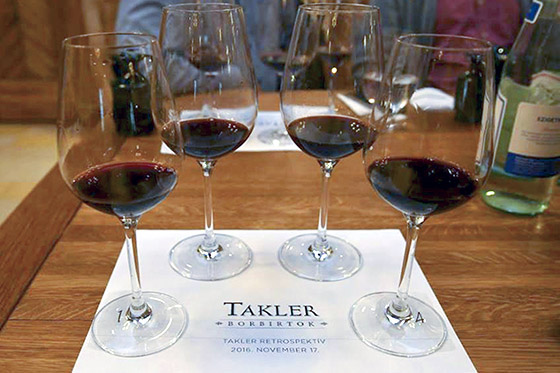
Museum wines
Szenta-Völgyi Kékfrankos 2009 I 88 points
Dark ruby, initially quite restrained on the nose but opens with some aeration. Concentrated ripe forest fruit with spice and a good dash of oak. Dense, creamy and full bodied with plenty of cherry and plum jam, attractive fruit, dark chocolate and coffee. Rather high alcohol, still relatively fresh acidity and a touch of bitterness on the long finish.
Kékfrankos Selection 2000 I 89 points
Deep ruby in colour, turning garnet. The wine has perhaps already reached its peak with some attractive sour cherry fruit remaining, but rather dominated by tertiary notes of prune, fallen leaves, earth, leather, chocolate, coffee and herbs. Concentrated with smooth tannins and crisp acidity.
Bikavér Selection 2003 (Magnum) I 92 points
Intense, rich, ripe black fruit and spice on nose. Cherry compote, blackberry, cinnamon, liquorice, leather and earthiness with a touch of bitterness on the long finish. Full-bodied, yet elegant and lively, with bright acidity, velvety tannins and again rather high alcohol. Still very fresh, but perhaps now reaching its peak.
Bikavér Selection 2000 I 80 points
Rather closed and lacking fruit. Dominated by toast and tertiary characteristics such as cognac cherry, prune, dried leaves and earth. A touch bitter with drying tannins. Now past its best.
Syrah Reserve 2008 I 89 points
Deep ruby in colour with intense black fruit. Cherry, blueberry and blackberry with a touch of black pepper on the nose. Complex, concentrated and multi-layered on the palate with cherry jam, prune, liquorice, leather, toast and coffee on the palate. Smoky, spicy tannins with high alcohol. A little overly jammy and oaky.
Cabernet Franc Reserve 2006 I 92 points
Deep ruby, turning garnet. Attractive nose with cognac cherry, blackberry, earth, leather and spice. Structured on the palate with ripe fruit, coffee, toast and a slight green note. Fresh acidity and smooth tannins. An elegant and refined wine.
Cabernet Franc Reserve 2003 I 93 points
Very intense black fruit, chocolate, liquorice and some floral notes on the nose. Full bodied, with fine tannins, zippy acidity and a long finish. Spicy, rich fruit, cool minty notes with some liquorice and green pepper. Alcohol better integrated than the 2006. Still very youthful. Not yet at its peak. Bottled young due to merchant demand.
Cabernet Sauvignon Reserve 2007 I 80 points
Black cherry, cassis and bramble jam with some liquorice, chocolate and leather. Very high alcohol, especially on the nose, rather grippy, drying tannins and dominated by oak. Heavy and simply too much of everything.
Primarius 2007 I 92 points
Plenty of fruit still, now turning to dried fruit such as prune and dried cherries. Strong notes of wild mushroom and truffle on the nose conjure up an autumn forest. Spicy cinnamon, liquorice, leather and coffee with a touch of mint and white pepper complete the picture. Full bodied and balanced with fine-grained tannins and a long finish.
Primarius 2006 I 90 points
Wonderful concoction of dried cherry, prune, coffee, fallen leaves, chocolate and spice. Attractive tertiary notes of truffles and wild mushrooms. Full-bodied and powerful yet elegant with velvety tannins and the signature high alcohol.
Regnum cuvee 2006 I 93 points
Classic Bordeaux style with plum, cherry, tobacco leaf and herbs on the nose. Slightly restrained initially but opens up. Full bodied and balanced with smooth tannins and lively acidity. Complex and multi-layered on the palate with cognac cherry, liquorice, vanilla, cinnamon and dried fruit. Dense wine with a long layered finish.
Regnum cuvee 1999 I 85 points
Very tertiary in character with fallen leaves, tobacco, mushroom, truffle, coffee, dried cherry, smoke and charcoal. Drying tannins and rather dominant alcohol with some tar, chalk, leather and pencil shavings on the palate. Somewhat past its best.



